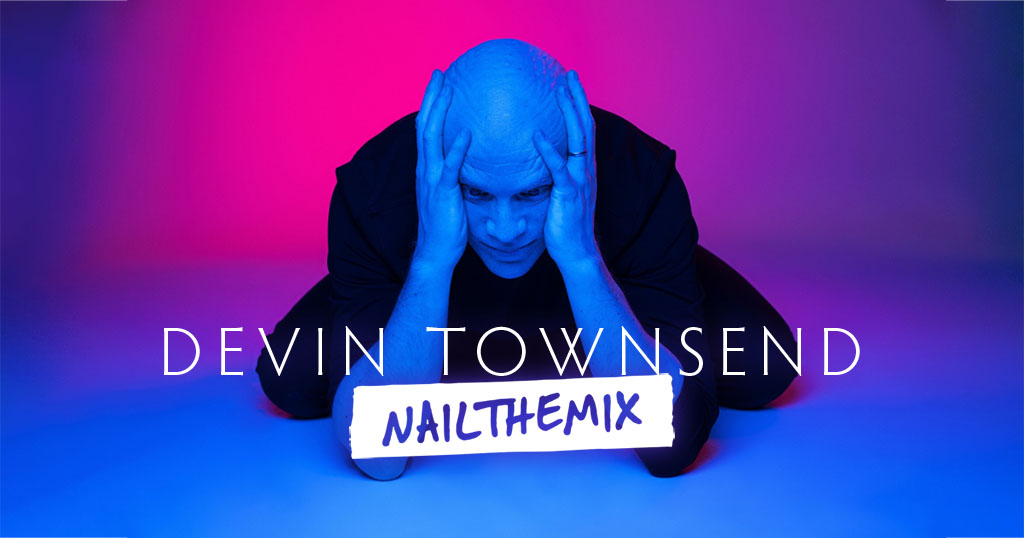
Mixing Luke Holland’s mindblowing drums w/ Jason Richardson & Taylor Larson
Nail The Mix Staff
Let’s be real, mixing drums for a track as dense and technical as a Jason Richardson song is a huge challenge. Luke Holland’s performance is incredible, but getting all those intricate cymbal patterns to cut through a wall of guitars and synths without turning into a harsh, washy mess is where the real magic happens. So how do you get cymbals that are both huge and articulate?
We dove into a mix session with producer Taylor Larson to see exactly how he tackled the drums for Jason Richardson’s track featuring Holding Absence. Forget what you think you know about traditional overhead mixing. Taylor’s approach is all about creating separation and impact, making the cymbals fly out of the speakers. Let’s break down his modern techniques.
Aggressive Overheads for Separation, Not Glue
In a busy modern metal mix, the last thing you want is a pair of overheads that “glues” the whole kit together in a washy smear. Instead, Taylor Larson treats them as the primary source for the cymbals themselves, aiming for maximum separation and punch.
Taming Harshness and Sculpting the Tone
The first step is controlling any harsh or ringy frequencies without killing the life of the cymbals. On the way into his DAW, Taylor runs the overheads through a high-fidelity signal chain: a pair of John Hardy Preamps, which he loves for their fast, detailed response on cymbals, into modded API 550A EQs.
In the box, if any harshness remains, he’ll reach for a plugin like Soothe2. But he’s not nuking the signal; he uses it on a soft setting with the wet/dry knob dialed back. This tames the problematic resonances while preserving the essential attack and character of the original performance.
The EQ Strategy: Surgical Cuts and Wide Boosts
Taylor’s overhead EQ strategy is aggressive and serves a very specific purpose: carving out space. You can see a massive scoop right around 300Hz, paired with a low shelf cutting everything below 391Hz. This move is critical—it removes low-mid buildup and mud from the cymbals, preventing them from clashing with the guitars and snare.
To give the cymbals that expensive-sounding air and lift, he adds a wide high-shelf boost starting way down at 1.5kHz. This lifts the entire top end of the kit, helping the cymbals float over the top of the dense instrumentation.
A Simple Trick for a Wider Stereo Image
Here’s a great tip you can try right away. Instead of placing the overhead mics in a standard, straight-on configuration, Taylor angles them outwards. This simple move enhances the stereo width, making the cymbals feel even more three-dimensional and spread out in the mix.
Subtle Compression for Life, Not Wash
One of the quickest ways to ruin a good cymbal sound is with bad compression. Hit them too hard, and you’ll obliterate the transients, turning every crash into a long, washy tail that clutters the mix. Taylor’s approach to drum compression is all about adding life and attitude, not squashing the dynamics.
The 1178 Attitude
For his overhead bus, Taylor often reaches for a UAD 1178, the stereo version of the classic 1176. He mentions that the plugin is based on the Rev G, which is known for having a unique character and attitude. He’s not looking for heavy gain reduction here. The compressor is just kissing the signal to add a bit of life.
Crucially, he sets the attack slower than he normally would. This allows the initial stick attack—the “ping” of the cymbal—to pass through untouched before the compressor kicks in. He then carefully tweaks the release time by ear until it sounds right, preventing the compression from creating that dreaded washy sound. It’s a delicate balance to maintain the attack while subtly controlling the dynamics.
Spot Mics: The Secret to Cymbal Articulation
With the overheads providing a wide, airy foundation, Taylor uses spot mics to add surgical punch and make specific parts pop. He thinks of them as enhancements, similar to how a producer might use snare samples to reinforce a live snare.
The Role of Spot Mics
The process starts with a clean source, with drum tech Ernie going through and meticulously cutting bleed from all the spot mic tracks. This ensures that when a spot mic is pushed up, you’re getting just that cymbal and not a mess of other kit pieces.
These individual mics for the hi-hats, ride, splashes, and stacks aren’t meant to be the main sound. They’re there to supplement the overheads, allowing Taylor to turn up a specific hi-hat pattern or a splash hit to draw the listener’s attention.
Processing Individual Cymbals
Each spot mic gets its own dedicated processing chain. Generally, this involves heavy high-pass filtering to remove lows, some EQ to shape the tone, and its own compressor.
- Hi-Hats: Taylor admits he loves loud hi-hats, so he’s not afraid to juice the hi-hat spot mic. For one section of the song, he even created a separate, more aggressive hi-hat track with heavier compression and a boost in the upper midrange to give it a modern, almost “trap-style” vibe that fit the part.
- Luke Holland’s Bullet Stack: Luke specifically wanted his signature stack to be loud and proud. A dedicated spot mic allows Taylor to EQ and compress it to cut through perfectly.
- Dynamic Ride: For sections with really busy ride cymbal work, a separate, heavily processed ride track was created to be jacked up in the mix, giving it more presence than the ride’s natural level in the overheads.
Importantly, these spot mics are not bussed and compressed together with the overheads. Keeping them separate allows them to retain their individual attack and pop out of the mix exactly when needed, rather than being glued down by a single compressor. Seeing this all come together is a masterclass, and you can watch Taylor build this exact drum mix from scratch in his full Nail The Mix session.
A Pragmatic Approach to Phase
Talk to producers online, and you’ll find endless anxiety about phase alignment, especially between drum overheads and close mics. Taylor’s philosophy is refreshingly simple: don’t look for a problem unless you hear one.
He doesn’t waste time nudging audio clips to time-align his overheads. He learned to mix on a console where that wasn’t an option, forcing him to rely on his ears. His process is straightforward: he listens. If something sounds thin or weak, he’ll flip the phase polarity button. Whichever way sounds better is the right way.
He argues that chasing perfect “scientific” alignment can lead to sterile, unmusical mixes that lack balls. Sometimes, the slight phase interactions between mics are what create a cool, wide, and interesting sound. After all, stereo imaging plugins work by introducing phase differences on purpose.
Bring It All Together
Taylor Larson’s approach is a powerful playbook for mixing modern metal drums:
- Shape overheads for separation with aggressive EQ, focusing on carving out mud and adding air.
- Use subtle compression to add life and attitude without creating wash.
- Leverage spot mics as enhancements to make specific cymbal parts pop.
- Trust your ears on phase, don’t get lost in the technical weeds.
These techniques are a huge piece of the puzzle for getting a pro-sounding drum mix. But imagine watching Taylor Larson balance this massive drum sound with Jason Richardson’s insane guitars, the bass, and vocals, explaining every move he makes.
Jason Richardson on Nail The Mix
Taylor Larson mixes "Upside Down"
Get the Session
At Nail The Mix, you get to be a fly on the wall for exactly that. Every month, members get the real multitracks from huge songs and watch the original producer mix it from the ground up. If you’re ready to move beyond presets and generic tutorials, you can see how the pros create their signature sounds by checking out the full Jason Richardson mixing session. To get a head start, you can also grab our free guide, [Unlock Your Sound: Mixing Modern Metal Beyond Presets](https://nailthemix.com/nail-the-mix-enhanced), and start applying these concepts to your own mixes today.
“`
Get a new set of multi-tracks every month from a world-class artist, a livestream with the producer who mixed it, 100+ tutorials, our exclusive plugins and more
Get Started for $1






